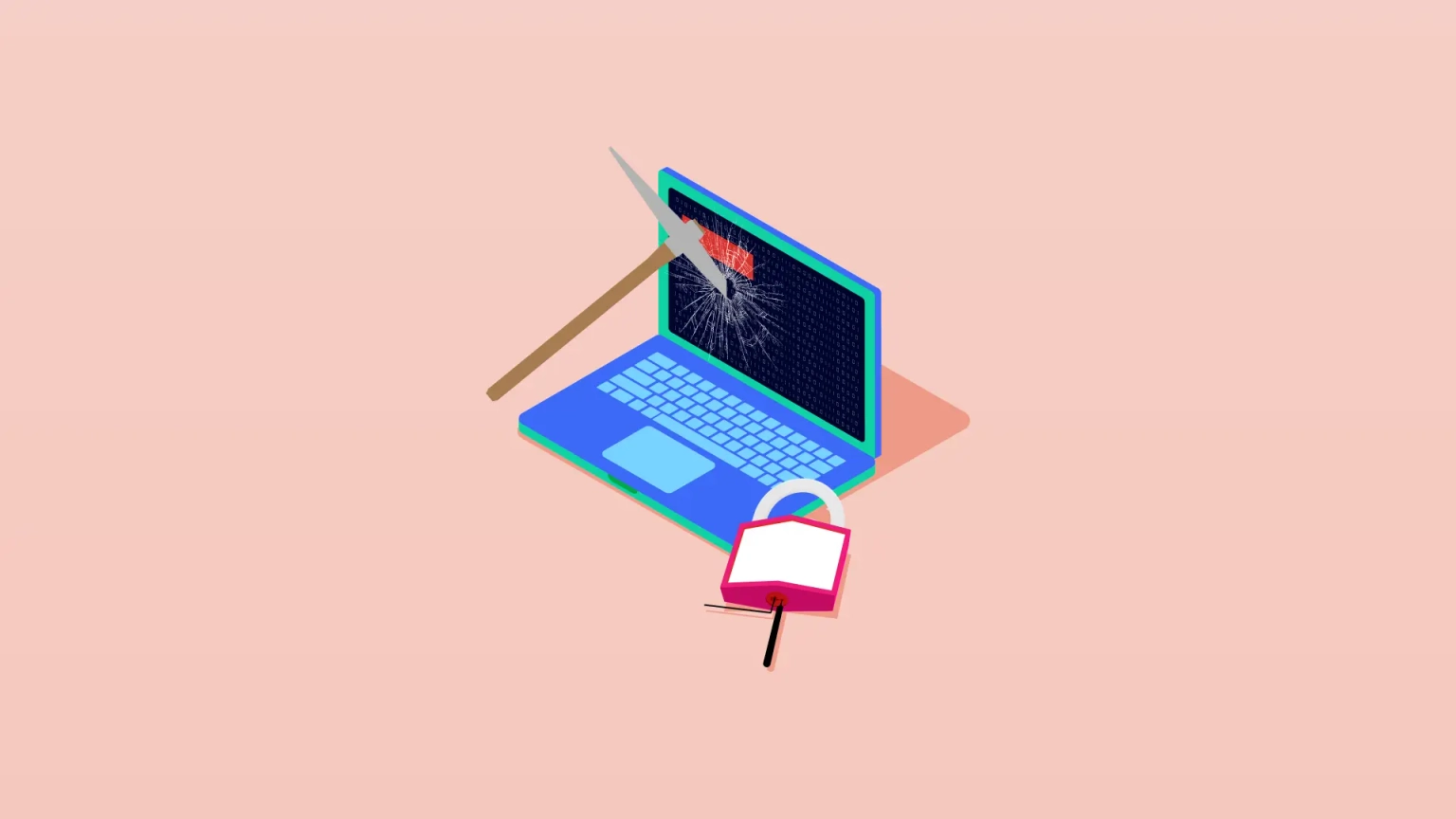
Collaboration between Neptune Mutual and SushiSwap
Explore Neptune Mutual's ongoing collaboration with SushiSwap offering several benefits.
Youtube Video
Playing the video that you've selected below in an iframe

Understand what cryptojacking is and how to prevent unauthorized mining from your devices.
The blockchain universe is expanding at an unprecedented pace, captivating the interest of countless individuals and major corporations alike. The rise of DeFi within this space has been an attractive sector, managing billions of dollars. As the blockchain space flourishes, it attracts the attention of malicious actors that look to exploit weaknesses and gain illegal access to the massive funds.
Among several threats in the Web3 space, cryptojacking stands out as a silent but pervasive danger. It is simply a cyberattack that hijacks users' computing power to mine cryptocurrency without their consent.
What exactly goes on behind the scenes of cryptojacking? How do attackers infiltrate systems, and what can you do to shield your computer and yourself from becoming targets of such attacks? Let’s find out from this blog post.
Cryptocurrency mining is a perfectly legal way to gain digital currencies. It involves solving complex mathematical puzzles that validate transactions on the blockchain. In return, the miners are rewarded with cryptocurrency. However, this operation requires computers and a significant amount of computational power. These high costs and technical barriers make mining a hefty investment.
Cryptojacking is a malicious twist on the mining process. Cryptojacking is the unauthorized takeover of someone else’s computer resources and computational power to mine cryptocurrency. Hackers deploy various tactics to sneak mining scripts into devices, turning them into secret mining machines without the owner's knowledge.
These attacks are designed to run silently in the background, so the process is virtually undetectable. Victims might not even realize their devices are being exploited. Cryptojacking doesn’t mess with your data or damage your device. Their main goal is to stay unnoticed for as long as they can. This stealth mode can lead to increased electricity bills and wear out your device faster due to the heavy lifting it's doing behind the scenes.
Now that we've touched on what cryptojacking is, you might wonder how attackers manage to hijack your device for their mining operations. Let's break down the process into simpler terms.
Cryptojacking starts when cybercriminals find a way to slip a piece of mining software onto your device. This software not only uses your device's power to mine cryptocurrency, it can even monitor cryptocurrency wallets.
Though the victims may not have any idea about their device being exploited, they might notice a slower speed or lags during basic computing operations.
There are two main tricks in the hacker's playbook for launching a cryptojacking attack. The first method is the common email phishing technique. The hackers can send you an email urging you to click on a link that looks perfectly safe. However, this link is a trap that loads a mining script directly onto your computer once clicked.
The second method involves sneaking a script into a website or an online ad. When you visit the infected site or click on the ad that pops up in your browser, the script automatically gets installed on your device. You won't download anything, but the script still turns your browsing session into a mining operation for the attacker.
Attackers often blend these strategies to cast a wider net, ensuring they can mine as much as possible from a variety of victims. The mining scripts tackle complex calculations all while flying under the radar, sending any mined cryptocurrency straight to the hacker's digital wallet.
Some cryptojacking scripts are even capable of spreading like worms, infecting other devices connected to the network. They're designed to be hard to spot and even harder to remove, often checking if your device is already under the spell of another mining operation and, if so, attempting to take over.
Even mobile devices aren't safe from these attacks. Through malicious apps or redirected websites, smartphones can also end up part of a cryptojacking network.
There are several service providers that create and sell cryptojacking scripts. A popular example of such a service provider is CoinHive, which launched a ready-made browser mining script in 2017 and sold the website owners. The same script was used in the infamous router takeover in Brazil in July 2018. The hackers secretly hijacked over 200,000 routers to conduct cryptocurrency mining.
Another popular example is the case of malicious apps in the Microsoft app store. There were eight individual apps that secretly mined crypto by downloading cryptojacking JavaScript code. They were eventually spotted and removed from the Microsoft Store in 2019.
The Los Angeles Times’ Homicide Report page was found with a hidden cryptojacking code in 2018. The visitors to the page unknowingly contributed to mining Monero. The cryptojacking script was so subtle in its resource use that it went undetected for a considerable period of time.
Ads on YouTube were found running the CoinHive miner via Google's DoubleClick platform, turning viewers' devices into participants in the mining process. The incident was detected in early 2018.
One of the first signs that your device might be under the influence of cryptojacking is a noticeable dip in performance. If your computer starts to lag, applications begin crashing more frequently, or tasks take longer to complete, it could be a signal that unauthorized mining is taking place.
Another sign is overheating. The intensive resource demand required for crypto mining can cause your device to heat up significantly. This is not just a minor inconvenience; prolonged overheating can damage your device or shorten its lifespan. If you notice that your computer's fan is working overtime or the device feels hotter than usual, it's worth investigating further.
Monitoring your CPU usage can also help uncover hidden cryptojacking scripts. An unexpected spike in CPU utilization, especially when visiting websites with minimal media content or when no demanding applications are running, should raise a red flag. You can check this through your device's Task Manager or Activity Monitor. However, be aware that some cryptojacking scripts are designed to disguise themselves or mimic legitimate processes, making them harder to pinpoint.
Safeguarding yourself from cryptojacking requires a mix of vigilance, preventive measures, and the right tools. Here's how you can protect your devices and personal information from unauthorized mining activities:
Install Browser Extensions: Consider adding browser extensions specifically designed to prevent cryptojacking attempts. Having said that, some browser extensions can be fraudulent or compromised. So, make sure to use the ones that are secure and reputable. MinerBlock, No Coin, and Anti Miner are some legitimate browser extensions at blocking unauthorized mining scripts from hijacking your browser.
Enable Ad Blockers: Many cryptojacking scripts are distributed through malicious ads. Using ad blockers can help prevent these scripts from executing, significantly reducing the risk of cryptojacking.
Disable JavaScript When Necessary: Since many cryptojacking scripts rely on JavaScript, disabling it while browsing can cut off this attack vector. Be mindful that this may affect the functionality of some websites.
Maintain Software Security: Ensure your operating system, browsers, and all applications are upgraded to the most secure versions available. It's important to note that the latest or most recently updated versions may not always be the most secure. Regularly check for updates that address security vulnerabilities potentially exploitable by cryptojackers.
Whitelist and Blacklist Websites: Be selective about the websites you visit. Whitelisting trusted sites and blacklisting known malicious ones can prevent accidental exposure to cryptojacking scripts.
Stay Informed: Keeping up with the latest developments in cryptojacking techniques can help you stay one step ahead of cybercriminals. Awareness of new threats enables you to adapt your defense strategies accordingly.
Neptune Mutual is a project with the aim to make DeFi a safe space so that everyone can surf this new financial landscape with confidence and peace of mind. Our DeFi insurance protocol covers users' cryptocurrency assets and funds against unexpected hacks, exploits, and security breaches.
One of the unique features of our protocol is the parametric model for covering assets. This eliminates the need for proof of loss or extensive claim assessment and instead relies on predefined parameters for payouts.
We offer a cover marketplace for different kinds of DeFi, CeFi, and Metaverse projects to create their own cover pools on the Ethereum, Arbitrum, and BNB Smart Chain networks.
If you are a project owner looking to offer your users cover protection, you can reach us through our contact page. We can have detailed discussions on setting up custom insurance pools with appropriate parameters.
Crypto users seeking to safeguard their investments can buy cover policies from the available pools in the marketplace. Furthermore, liquidity providers can also look into supplying liquidity in our cover pools and yielding attractive returns.
For more information, updates, and offers from Neptune Mutual, visit our website, follow us on Twitter (X), and join our Discord community.